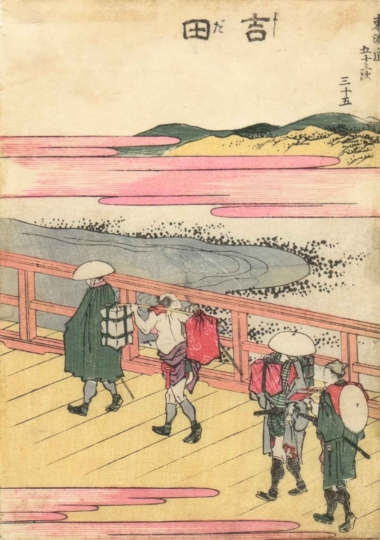

Katsushika HOKUSAI (1760–1849) attended the school of Katsukawa Shunshō, which strongly influenced his artistic career. In his long, over 70-year creative period, he made a large number of woodcuts, but also studied the painting styles of many other schools and Chinese and Western painting. The main work of his colored woodcuts was created from 1820. His work includes all subjects of the color woodcut. He created depictions of beautiful women ( bijin- ga), actor portraits, landscapes, depictions of birds and flowers, caricatures, book illustrations and painting pattern books. Among his best works are his paintings ( nikuhitsu-ga ), his poetry, calendar and New Year sheets ( surimono ) his sketchbooks, his series on the “100 Views of Mount Fuji” and his series of “36 Views of Mount Fuji”.
Katsushika HOKUSAI (1760–1849) attended the school of Katsukawa Shunshō, which strongly influenced his artistic career. In his long, over 70-year creative period, he made a large number of woodcuts, but also studied the painting styles of many other schools and Chinese and Western painting. The main work of his colored woodcuts was created from 1820. His work includes all subjects of the color woodcut. He created depictions of beautiful women ( bijin- ga), actor portraits, landscapes, depictions of birds and flowers, caricatures, book illustrations and painting pattern books. Among his best works are his paintings ( nikuhitsu-ga ), his poetry, calendar and New Year sheets ( surimono ) his sketchbooks, his series on the “100 Views of Mount Fuji” and his series of “36 Views of Mount Fuji”.






Recent Comments